#character: epsilon azure
Explore tagged Tumblr posts
Text
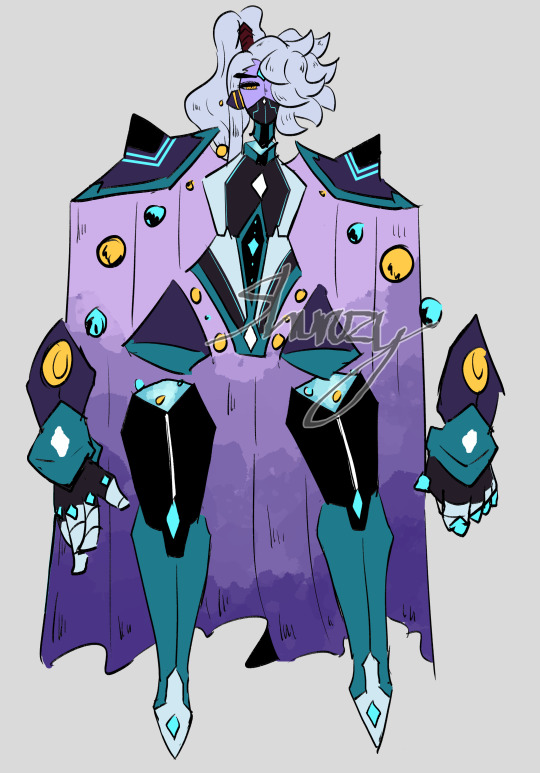
thinking more abt Azure's color palette.....
13 notes
·
View notes
Text
i feel like if i made & released a character inspiration sheet for Epsilon Azure everything will become very clear
4 notes
·
View notes
Photo

The Second Book Of Esdras - Also Known As - THE BOOK OF NEHEMIAS - From The Douay-Rheims Bible - Latin Vulgate
Chapter 10
INTRODUCTION.
This Book takes its name from the writer, who was cup-bearer to Artaxerxes, (surnamed Longimanus) king of Persia, and was sent by him with a commission to rebuild the walls of Jerusalem. It is also called the Second Book of Esdras, because it is a continuation of the history begun by Esdras, of the state of the people of God after their return from captivity. Ch. --- Genebrard believes that the latter wrote the work. But how long must he thus have lived? and how come the lists to vary so much? C. --- We may allow that these variations are owing to the mistakes of transcribers, (1 Esd. ii. 1.) for the writer of both works was certainly inspired. Esdras lived a long time along with Nehemias; (C. xii. 35.) and he may have left memorials, as well as the latter, from which the present work seems to be compiled. H. --- Some additions have been made since the days of Nehemias, articularly C. xii. to v. 26, or at least (C.) the five last of these verses. Capel. Chron. --- The passage cited from the commentaries of Nehemias, (2 Mac. ii. 13.) is not to be found here; which shews that we have not his entire work, but only an abridgment, in which the author has adopted his words, with some few alterations. The fifth chapter seems to be out of its place, and also the dedication of the walls. C. xii. 27. Nehemias was a person in great favour at the court of Persia; and of high birth, probably of the royal family, (Euseb. Isid. Genebrard in Chron.) as most of the ancients believe that all who governed, till the time of the Asmoneans, were of the tribe of Juda. Hence he styles Hanani his brother, (C. i. 2.) and declines entering into the temple. C. vi. 11. His name never occurs among the priests; and though we read 2 Mac. i. 18. 21, jussit sacerdos Nehemias, (T.) the Greek has, "Nehemias order the priests;" iereiV: (C. Huet. D.) and the title of priest sometimes is given to laymen at the head of affairs. H. --- In this character Nehemias appeared, by order of Artaxerxes: and notwithstanding the obstructions of the enemies of Juda, rebuilt the walls of Jerusalem, and returned after twelve years to court, making a second visit to his own country, a little before the death of the king, whom he probably survived only one year, dying A. 3580, about thirty years after he had been appointed governor. C. --- In the two first chapters, we behold his solicitude for the welfare of his country, in the ten following his success, and in the last what abuses he corrected. W. --- He renewed the covenant with God, (C. ix. and x.) sent for the sacred fire, and established a library at Jerusalem. 2 Mac. i. 19. 34. and ii. 13. H.
The additional Notes in this Edition of the New Testament will be marked with the letter A. Such as are taken from various Interpreters and Commentators, will be marked as in the Old Testament. B. Bristow, C. Calmet, Ch. Challoner, D. Du Hamel, E. Estius, J. Jansenius, M. Menochius, Po. Polus, P. Pastorini, T. Tirinus, V. Bible de Vence, W. Worthington, Wi. Witham. — The names of other authors, who may be occasionally consulted, will be given at full length.
Verses are in English and Latin. HAYDOCK CATHOLIC BIBLE COMMENTARY
This Catholic commentary on the Old Testament, following the Douay-Rheims Bible text, was originally compiled by Catholic priest and biblical scholar Rev. George Leo Haydock (1774-1849). This transcription is based on Haydock's notes as they appear in the 1859 edition of Haydock's Catholic Family Bible and Commentary printed by Edward Dunigan and Brother, New York, New York.
TRANSCRIBER'S NOTES
Changes made to the original text for this transcription include the following:
Greek letters. The original text sometimes includes Greek expressions spelled out in Greek letters. In this transcription, those expressions have been transliterated from Greek letters to English letters, put in italics, and underlined. The following substitution scheme has been used: A for Alpha; B for Beta; G for Gamma; D for Delta; E for Epsilon; Z for Zeta; E for Eta; Th for Theta; I for Iota; K for Kappa; L for Lamda; M for Mu; N for Nu; X for Xi; O for Omicron; P for Pi; R for Rho; S for Sigma; T for Tau; U for Upsilon; Ph for Phi; Ch for Chi; Ps for Psi; O for Omega. For example, where the name, Jesus, is spelled out in the original text in Greek letters, Iota-eta-sigma-omicron-upsilon-sigma, it is transliterated in this transcription as, Iesous. Greek diacritical marks have not been represented in this transcription.
Footnotes. The original text indicates footnotes with special characters, including the astrisk (*) and printers' marks, such as the dagger mark, the double dagger mark, the section mark, the parallels mark, and the paragraph mark. In this transcription all these special characters have been replaced by numbers in square brackets, such as [1], [2], [3], etc.
Accent marks. The original text contains some English letters represented with accent marks. In this transcription, those letters have been rendered in this transcription without their accent marks.
Other special characters.
Solid horizontal lines of various lengths that appear in the original text have been represented as a series of consecutive hyphens of approximately the same length, such as ---.
Ligatures, single characters containing two letters united, in the original text in some Latin expressions have been represented in this transcription as separate letters. The ligature formed by uniting A and E is represented as Ae, that of a and e as ae, that of O and E as Oe, and that of o and e as oe.
Monetary sums in the original text represented with a preceding British pound sterling symbol (a stylized L, transected by a short horizontal line) are represented in this transcription with a following pound symbol, l.
The half symbol (1/2) and three-quarters symbol (3/4) in the original text have been represented in this transcription with their decimal equivalent, (.5) and (.75) respectively.
Unreadable text. Places where the transcriber's copy of the original text is unreadable have been indicated in this transcription by an empty set of square brackets, [].
Chapter 10
The names of the subscribers to the covenant, and the contents of it.
[1] And the subscribers were Nehemias, Athersatha the son of Hachelai, and Sedecias,
Signatores autem fuerunt Nehemias, Athersatha filius Hachelai, et Sedecias,
[2] Saraias, Azarias, Jeremias,
Saraias, Azarias, Jeremias,
[3] Pheshur, Amarias, Melchias,
Pheshur, Amarias, Melchias,
[4] Hattus, Sebenia, Melluch,
Hattus, Sebenia, Melluch,
[5] Harem, Merimuth, Obdias,
Harem, Merimuth, Obdias,
[6] Daniel, Genthon, Baruch,
Daniel, Genthon, Baruch,
[7] Mosollam, Abia, Miamin,
Mosollam, Abia, Miamin,
[8] Maazia, Belgia, Semeia: these were priests.
Maazia, Belgai, Semeia : hi sacerdotes.
[9] And the Levites, Josue the son of Azanias, Bennui of the sons of Henadad. Cedmihel,
Porro Levitae, Josue filius Azaniae, Bennui de filiis Henadad, Cedmihel,
[10] And their brethren, Sebenia, Oduia, Celita, Phalaia, Hanan,
et fratres eorum, Sebenia, Odaia, Celita, Phalaia, Hanan,
[11] Micha, Rohob, Hasebia,
Micha, Rohob, Hasebia,
[12] Zachur, Serebia, Sabania,
Zachur, Serebia, Sabania,
[13] Odaia, Bani, Baninu.
Odaia, Bani, Baninu.
[14] The heads of the people, Pharos, Phahath Moab, Elam, Zethu, Bani,
Capita populi, Pharos, Phahathmoab, Aelam, Zethu, Bani,
[15] Bonni, Azgad, Bebai,
Bonni, Azgad, Bebai,
[16] Adonia, Begoai, Adin,
Adonia, Begoai, Adin,
[17] Ater, Hezecia, Azur,
Ater, Hezecia, Azur,
[18] Odaia, Hasum, Besai,
Odaia, Hasum, Besai,
[19] Hareph, Anathoth, Nebai,
Hareph, Anathoth, Nebai,
[20] Megphias, Mosollam, Hazir,
Megphias, Mosollam, Hazir,
[21] Mesizabel, Sadoc, Jeddua,
Mesizabel, Sadoc, Jeddua,
[22] Pheltia, Hanan, Anaia,
Pheltia, Hanan, Anaia,
[23] Osee, Hanania, Hasub,
Osee, Hanania, Hasub,
[24] Alohes, Phalea, Sobec,
Alohes, Phalea, Sobec,
[25] Rehum, Hasebna, Maasia,
Rehum, Hasebna, Maasia,
[26] Echaia, Hanan, Anan,
Echaia, Hanan, Anan,
[27] Melluch, Haran, Baana:
Melluch, Haran, Baana.
[28] And the rest of the people, priests, Levites, porters, and singing men, Nathinites, and all that had separated themselves from the people of the lands to the law of God, their wives, their sons, and their daughters.
Et reliqui de populo, sacerdotes, Levitae, janitores, et cantores, Nathinaei, et omnes qui se separaverunt de populis terrarum ad legem Dei, uxores eorum, filii eorum, et filiae eorum,
[29] All that could understand promising for their brethren, with their chief men, and they came to promise, and swear that they would walk in the law of God, which he gave in the hand of Moses the servant of God, that they would do and keep all the commandments of the Lord our God, and his judgments and his ceremonies.
omnes qui poterant sapere spondentes pro fratribus suis, optimates eorum, et qui veniebant ad pollicendum et jurandum ut ambularent in lege Dei, quam dederat in manu Moysi servi Dei, ut facerent et custodirent universa mandata Domini Dei nostri, et judicia ejus et caeremonias ejus,
[30] And that we would not give our daughters to the people of the land, not take their daughters for our sons.
et ut non daremus filias nostras populo terrae, et filias eorum non acciperemus filiis nostris.
[31] And if the people of the land bring in things to sell, or any things for use, to sell them on the sabbath day, that we would not buy them of them on the sabbath, or on the holy day. And that we would leave the seventh year, and the exaction of every hand.
Populi quoque terrae, qui important venalia, et omnia ad usum, per diem sabbati ut vendant, non accipiemus ab eis in sabbato et in die sanctificato. Et dimittemus annum septimum, et exactionem universae manus.
[32] And we made ordinances for ourselves, to give the third part of a side every year for the work of the house of our God,
Et statuemus super nos praecepta, ut demus tertiam partem sicli per annum ad opus domus Dei nostri,
[33] For the leaves of proposition, and for the continual sacrifice, and for a continual holocaust on the sabbaths, on the new moons, on the set feasts, and for the holy things, and for the sin offering: that atonement might be made for Israel, and for every use of the house of our God.
ad panes propositionis, et ad sacrificium sempiternum, et in holocaustum sempiternum in sabbatis, in calendis, in solemnitatibus, et in sanctificatis, et pro peccato : ut exoretur pro Israel, et in omnem usum domus Dei nostri.
[34] And we cast lots among the priests, and the Levites, and the people for the offering of wood, that it might be brought into the house of our God by the houses of our fathers at set times, from year to year: to burn upon the altar of the Lord our God, as it is written in the law of Moses:
Sortes ergo misimus super oblationem lignorum inter sacerdotes, et Levitas, et populum, ut inferrentur in domum Dei nostri per domos patrum nostrorum, per tempora, a temporibus anni usque ad annum : ut arderent super altare Domini Dei nostri, sicut scriptum est in lege Moysi :
[35] And that we would bring the first fruits of our land, and the firstfruits of all fruit of every tree, from year to year, in the house of our Lord.
et ut afferremus primogenita terrae nostrae, et primitiva universi fructus omnis ligni, ab anno in annum, in domo Domini :
[36] And the firstborn of our sons, and of our cattle, as it is written in the law, and the firstlings of our oxen, and of our sheep, to be offered in the house of our God, to the priests who minister in the house of our God.
et primitiva filiorum nostrorum, et pecorum nostrorum, sicut sciptum est in lege, et primitiva boum nostrorum, et ovium nostrarum, ut offerrentur in domo Dei nostri, sacerdotibus qui ministrant in domo Dei nostri :
[37] And that we would bring the firstfruits of our meats, and of our libations, and the fruit of every tree, of the vintage also and of oil to the priests, to the storehouse of our God, and the tithes of our ground to the Levites. The Levites also shall receive the tithes of our works out of all the cities.
et primitias ciborum nostrorum, et libaminum nostrorum, et poma omnis ligni, vindemiae quoque et olei afferemus sacerdotibus ad gazophylacium Dei nostri, et decimam partem terrae nostrae Levitis. Ipsi Levitae decimas accipient ex omnibus civitatibus operum nostrorum.
[38] And the priest the son of Aaron shall be with the Levites in the tithes of the Levites, and the Levites shall offer the tithe of their tithes in the house of our God, to the storeroom into the treasure house.
Erit autem sacerdos filius Aaron cum Levitis in decimis Levitarum, et Levitae offerent decimam partem decimae suae in domo Dei nostri ad gazophylacium in domum thesauri.
[39] For the children of Israel and the children of Levi shall carry to the treasury the firstfruits of corn, of wine, and of oil: and the sanctified vessels shall be there, and the priests, and the singing men, and the porters, and ministers, and we will not forsake the house of our God.
Ad gazophylacium enim deportabunt filii Israel, et filii Levi, primitias frumenti, vini, et olei : et ibi erunt vasa sanctificata, et sacerdotes, et cantores, et janitores, et ministri, et non dimittemus domum Dei nostri.
Commentary:
Ver. 1. Athersatha. Heb. hatirshatha. Prot. "the tirshatha," cup-bearer, or governor, highly (H.) "privileged" and honoured by Artaxerxes. W. --- Heb. "And over those who were sealed, (C. Sept. or who sealed the deed. H.) Nehemias, the cup-bearer." Esdras, Eliasib, &c. were also princes. C. --- It is not easy to account for the omission of their names. M. --- They may be designated by different titles. An aristocracy, mixed with oligarchy, was the present form of government. The advice of the ancients, and of the people, was taken. C. --- Hachelai, is less properly styled Helchias; (C. i. 1.) where the Sept. read Chelchias, or Achalia, (Heb. chacala) as well as here.
Ver. 8. Priests. All, at least after Nehemias. H.
Ver. 14. Pharos. Many of these are mentioned as returning from Babylon. C. vii. 8. 11. &c.
Ver. 28. Lands. Idolaters, (H.) namely, the proselytes. M. --- Daughters. These did not all subscribe in person, but by the hands of the intelligent, and chief men, (v. 29.) or, (C.) as the Sept. seem to understand, these went through the different ranks of the people, and received their oaths. E. M.
Ver. 29. Understand. Heb. mebin, "the teachers," or Levites. 1 Esd. viii. 16. M. --- Promising. Heb. "clave to their brethren;" and they promised with a curse to transgressors, and with an oath to walk, &c. H.
Ver. 30. And. In all covenants, the articles which have been chiefly broken, are specified. W.
Ver. 31. Holy day. The contrary practice is therefore sinful. H. --- Year. Not cultivating the land. Lev. xxv. 4. --- Hand. No debts were to be demanded. Deut. xv. 1. M.
Ver. 32. Third part. About 9d. (H.) on account of the poverty of the people. C. --- They afterwards paid half a sicle, or 1s. 2d. conformably to the law. Ex. xxx. 13. Mat. xvii. 23. H. --- Before the captivity, the kings of Juda provided sacrifices, (2 Par. xxxi. 3.) and after, the Persian monarchs supplied what was requisite, in favour of Zorababel and Esdras. C. vi. 8. and vii. 21. But these grants had been recalled, or were not well executed.
Ver. 34. Wood. The Nathinites had performed this office till the captivity. But not their numbers were too small. C. --- The people therefore brought the wood. The Levites, with the Nathinites, carried it into the temple, and the priests laid it upon the altars; all being regulated by lots. Lyran. --- Hence the feast called Xylophoria, was instituted about the month of August, as we may gather from Josephus. The Rabbins say that the priests cut the wood, from March till the 15th of July.
Ver. 35. Every tree, of seven species; the pear, apple, fig, apricot, olive, palm, and vine trees; besides wheat, legumes, &c. C. --- For three years the fruit was deemed unclean. Lev. xix. 23. M.
Ver. 37. Meats. Heb. "paste." Num. xv. 20. C. and xxiii. 17. - Ground, or the produce. M.
Ver. 38. With. To observe that all is done according to the law. Num. xviii. 26. C.
1 note
·
View note
Note
Thank you very much Gear Project. P.S. What does Es say if she beats Ragna and are Ragna and Naoto spritually tied to or are alternate versions of Touya sense they say if they know her?
Es' response to Ragna is generic, unfortunately. Non character specific.
Seriously though, ask @abyss-of-the-azure these questions, he's the expert!
As of BloodEdge Experience, Touya's employer and boss is an "adult" Amanohokosaka Rin of Sleipnir, so unless the Grimoire doesn't affect Touya's age, he'd be a middle aged man in Naoto's time and place. Es would be much older too.
Supposedly Naoto's sister "Saya" was the basis for PFD "Epsilon" No.5, though it's never said if the two are one and the same. Jubei had to kill No.5 supposedly too.
Ragna, Jin, and Saya technically share No.5 as their "mother", but the details are sketchy about that.
Saya inherited No.5's ability to amplify Seithr, Jin somehow got the Power of Order (which is rumored to have passed to Tsubaki), and Ragna didn't inherit squat... Or so it seemed at first.
Ragna had no Ars Magus aptitude at first, but once he merged with the Azure Grimoire, "Soul Eater" Naoto's Sister Saya's Drive was made prominent.
He could do a ton of things besides Soul Eater with the BlazBlue, but that Drive seems to have run in the family of Terumi/Kurogane/Amanohokosaka.
So essentially Naoto is Ragna's Half-Uncle once removed. Touya's no direct relation, but Nine inherits something related to him in her eye.
3 notes
·
View notes
Text

sattou azure will protect everyone
8 notes
·
View notes
Text

been thinking more about Azure's battle form now that I have the time. I think the orb arms look a lil funny (good) and work with how his hands change shape (for example both hands fuse to become a big ass bow when changing to the Saggitarius Cognition).
i hope he looks tall here cause he gets 9 inches taller in this form (6'8)
9 notes
·
View notes
Text


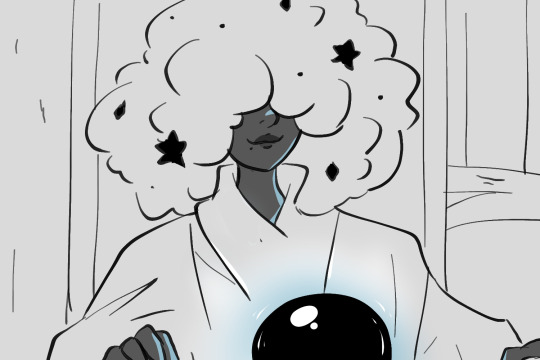
maybe they will make the sea less ominous
#ocs#project sea omen#omen of apsides#character: luneres#character: epsilon azure#character: nashira#character: karo
8 notes
·
View notes
Text


i asked people's favorite sea animals on main for nefarious reasons (apsides) on main
#ocs#project sea omen#omen of apsides#character: luneres#character: nashira#character: epsilon azure#character: karo
6 notes
·
View notes
Text

the Apsides tour guides don't tell you about these peculiar-ass Shark Attacks
#ocs#character: luneres#character: epsilon azure#i only labeled it mature bc of luneres' stupid fucking voluminous shark ass
5 notes
·
View notes
Text

I wanna do a concept sketch lineup of the playable characters in Sea Omen, so here's the Prologue Trio to start :]



#Luneres isn't all that short (5'7). everyone around him's just tall as fuck.#ocs#character: luneres#character: epsilon azur#character: nashira#'do starseers have to show their Constellation Marks for any reason' i dont know.#i dont know yet.#project sea omen#omen of apsides#omen of apsides concept party
17 notes
·
View notes
Text

"AE-07, aka Astroid EPSILON, 7th Edition! aka EPSILON! aka EPSILON-Azur! aka Az--"
"Stop talking. For you, my name is Epsilon. Nothing more."
#ocs#character: epsilon azur#project sea omen#been in a pickle trying to figure out his design as of late. cry emoji#i want him to have big 80s-90s anime shoulderpads....#i think this could be his combat form with some adjustments#mainly a helmet that obscures his face completely
9 notes
·
View notes
Text


something like this happens every time Luneres' HP is reduced below 50%
#i wanted to finally try n figure out their colors......#ocs#character: luneres#character: epsilon azur#project sea omen#omen of apsides
9 notes
·
View notes
Text
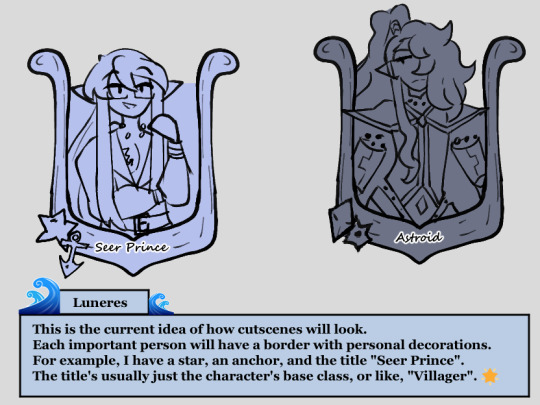
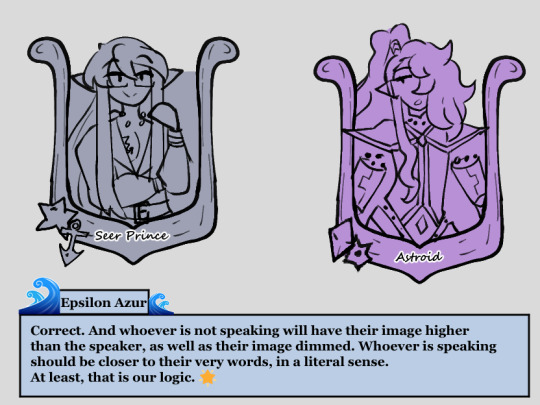
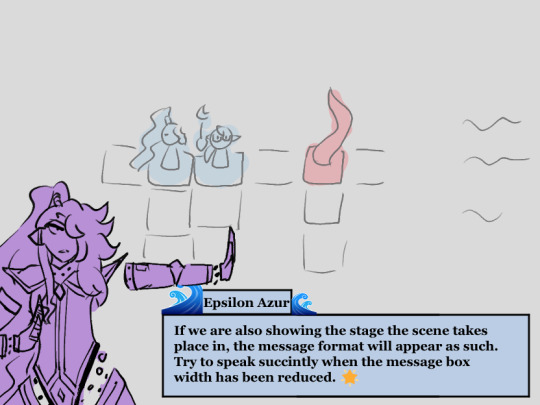
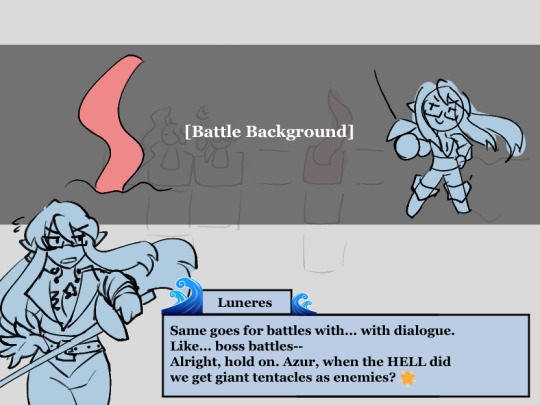
Next Omen of Apsides mockup sketches... it's the cutscenes! thank you 🌊🌟 emojis
9 notes
·
View notes
Text

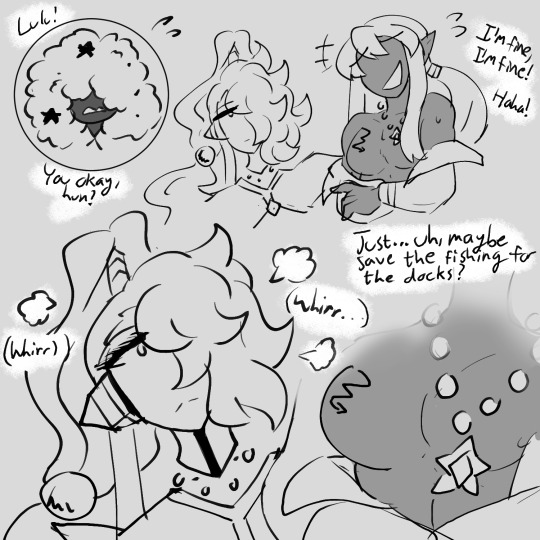
Nashira fishing incident 001 (0 dead, 0 injured, 1 life changed)
#ocs#character: nashira#character: luneres#character: epsilon azur#if anyone thought omen of apsides wouldn't partially be about men upon the high seas breatsing boobily idk what to say dawg#project sea omen#omen of apsides
5 notes
·
View notes
Text
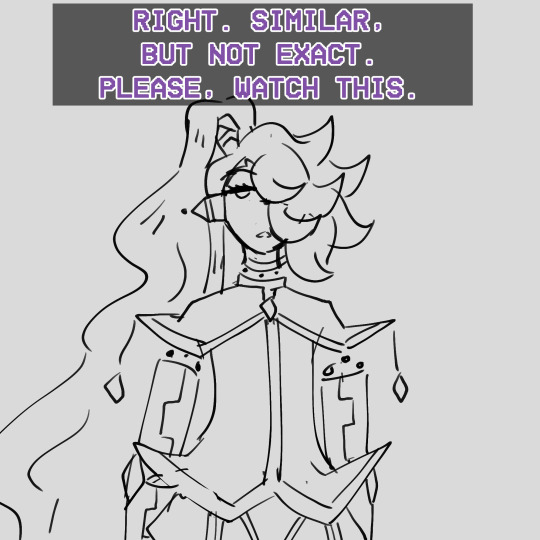
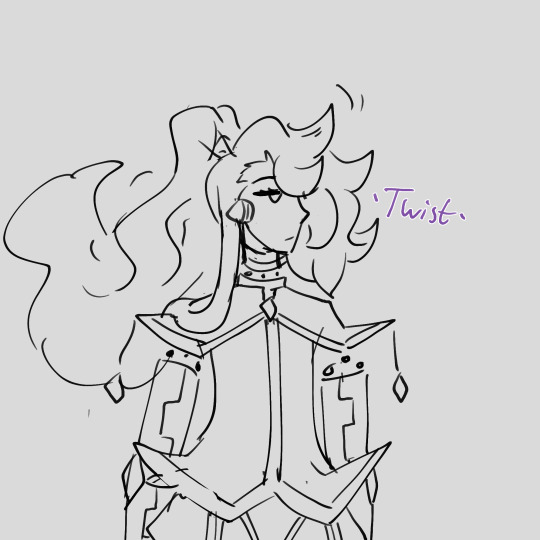
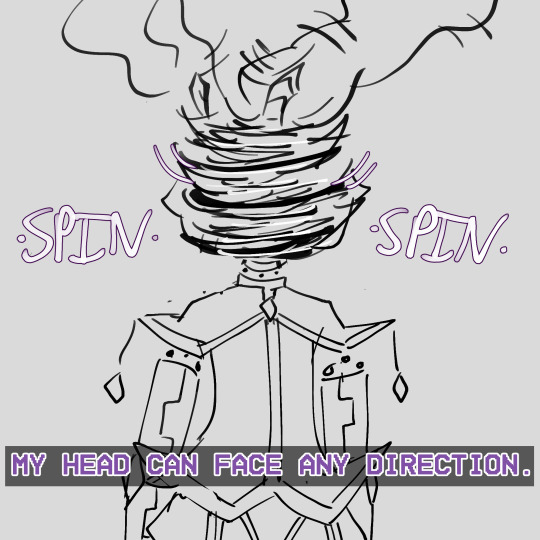
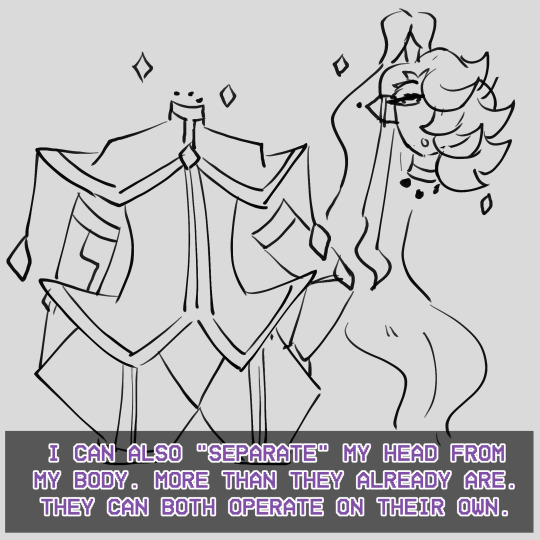
response to Azur's head turning being like an owl... guy of many talents
2 notes
·
View notes
Text
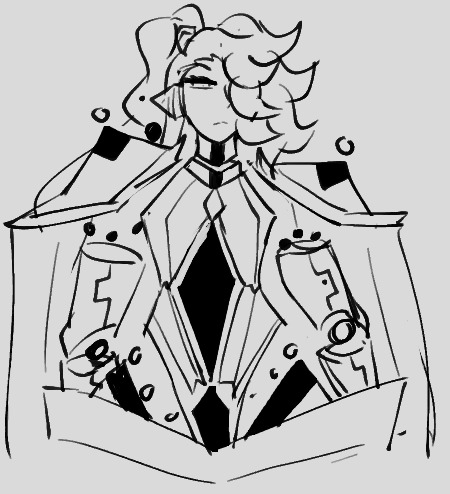


azur sneakup
2 notes
·
View notes